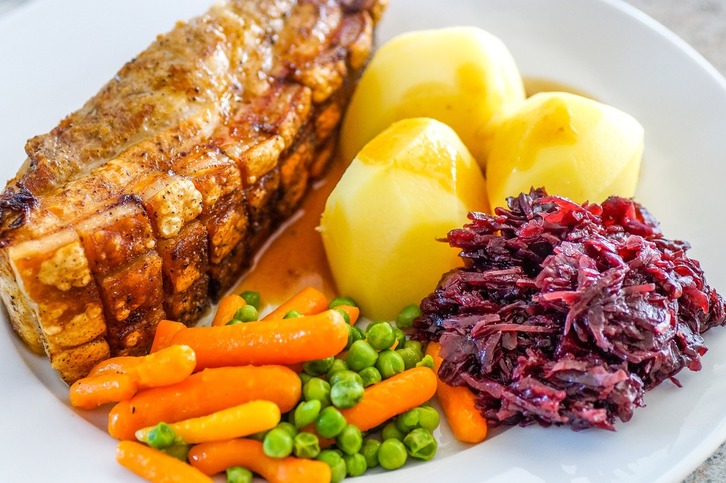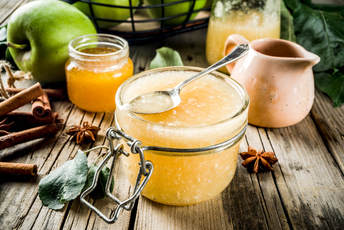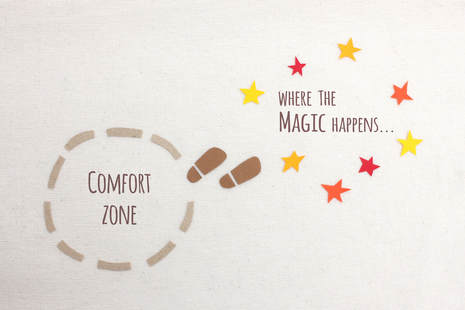|
The world of food can be so confusing at times. There was a time when it was clear what food was - it came directly from nature - whether foraging, hunting, or farming. Now there are so many things we eat that don't resemble a natural food. Michael Pollan has a famous quote, he said, "Eat Food - Not too much - Mostly Plants". And in his famous book, In Defense of Food, he defines what food should be. He says, "Don't eat anything your great-great-grandmother wouldn't recognize as food." And, we can all agree that some things are obviously not recognizable by our great-great-grandmothers: candy bars, fast food, and sports drinks. We can also say that many of the common health issues we face today: heart disease, diabetes, some cancers, cavities, etc. didn't exist at anywhere near the rates before industrially processed foods became available. But, where do we draw the line? How do we define processed? How processed is processed? And what the heck is ultra-processed? Allow me to let you in on the internationally recognized classification system. And we’re going to go through it step-by-step with an apple. Unprocessed According to NOVA, a tool for nutrition and public health research, policy and action, the official definition of unprocessed or natural foods is: "The edible parts of plants (seeds, fruits, leaves, stems, roots) or of animals (muscle, offal, eggs, milk), and also fungi, algae, and water, after separation from nature." This is like eating a whole apple right off the tree - clearly unprocessed. Minimally processed Minimally processed foods are: "natural foods altered by processes such as removal of inedible or unwanted parts, drying, crushing, grinding, fractioning, filtering, roasting, boiling, pasteurization, refrigeration, freezing, placing in containers, vacuum packaging, or nonalcoholic fermentation. None of these processes adds substances such as salt, sugar, oils or fats to the original food." So, with our apple example, once you cut the apple's core out and put the slices into a container to bring with you for your afternoon snack, you are processing it - minimally. You can even peel and boil that chopped apple to make applesauce. And, as long as you don't add anything else (like cinnamon), it's still considered minimally processed. Processed Processed foods, on the other hand, are relatively simple products made by adding sugar, oil, salt or other processed ingredients to unprocessed foods. "Most processed foods have two or three ingredients. Processes include various preservation or cooking methods, and, in the case of bread and cheese, non-alcoholic fermentation. The main purpose of the manufacture of processed foods is to increase the durability of unprocessed foods, or to modify or enhance their sensory qualities." So, if you take that applesauce, add cinnamon, and/or use it in a recipe, you technically have processed the apple. This can still be a healthy choice, as you'll see in the next definition of ultra-processed. Ultra-processed Here's where things get interesting and scary! Ultra-processed foods are: "Industrial formulations typically with five or more and usually many ingredients. Such ingredients often include those also used in processed foods, such as sugar, oils, fats, salt, anti-oxidants, stabilizers, and preservatives. Ingredients only found in ultra-processed products include substances not commonly used in culinary preparations, and additives whose purpose is to imitate sensory qualities of [unprocessed] foods ... or to disguise undesirable sensory qualities of the final product. [Unprocessed] foods are a small proportion of or are even absent from ultra-processed products." So, pre-packaged apple strudel with a long shelf life is very much an ultra-processed food. If you took a look at the ingredient list of pre-packaged apple strudel (one with a long shelf life), you would see added sugars, oils, preservatives, and flavor enhancers. And we can argue that the healthy apple is a small (very small) proportion of the strudel. There is a clear delineation between unprocessed (the apple) and ultra-processed (the pre-packaged strudel with a long shelf life) foods. An apple is nowhere near what a mass produced apple strudel is. But, there are a couple of different categories in between these - namely minimally processed and processed. It’s clear that unprocessed (apple) and minimally processed (plain applesauce) foods are almost always quite healthy and nutritious. It's also clear that ultra-processed food is not so healthy. Now that you know the definitions of these foods, I think you'll agree with me that the commonly used term processed is often referring to the industrial ultra-processing of foods. I’d love to hear your thought on these definitions. Let me know in the comments below. Recipe (minimally processed): Slow-Cooker Applesauce Serves 16
4 lbs apples, washed and chopped ¾ cup water Instructions: Place apples and water in a large pot. Bring to a boil and simmer until apples are soft about 20 minutes. Blend or mash the apples into desired consistency. Serve & enjoy! Tip: Add some cinnamon for extra flavor and use the applesauce to make overnight oats.
0 Comments
We all have to learn how to be comfortable with being uncomfortable. But we rarely do because it’s so much easier to seek what’s familiar and safe. We sniff a hint of uneasiness and we run as fast as we can - it’s the major reason why we find it so hard to change our habits. Feeling inconvenience makes our hearts pound, our palms get sweaty and our stomach does somersaults. Whenever we find ourselves in this position we disguise our discomfort by picking up negative habits which rarely succeed at getting rid of it. They can range from binge eating, drugs, alcohol, and other kinds of addictions and abusive behavior. But when you befriend your unease, you empower yourself with one of the most essential survival skills you can have. It doesn’t come naturally, and it can be a bit overwhelming, you have to work at it to achieve it. It’s not easy and definitely scary, but very worth it. It’s in that area of discomfort where you find out what you’re made of. You become tougher and more experienced. You hold on, weather the storm, knowing that it’s temporary but it’ll shape you into the person who you’ve always wanted to become but never knew how. You also have to realize that it’s a long-term plan for you to grow and gain clarity. Pushing boundaries, breaking limits - that’s when you grow as an individual and begin finding new possibilities to help you reach your true potential. It’s when you’re uncomfortable that you actually test your character and resilience. But when you’re on a journey of self-discovery, it’s normal to face some bumpy times emotionally. That’s why it’s important to work on boosting your self-confidence because you’re the only one who can get rid of your fear and stand strong in the face of turbulence. You can’t always have a clear picture of your master plan, sometimes you just have to take that leap of faith and trust yourself to deal with the outcome no matter what. And it’s when you push past your comfort zone that your creative juices start flowing and can create new ideas. Putting yourself out there and feeling self-conscious can be frightening, yet also dynamic and intoxicating. There are many things you can do to allow yourself to embrace discomfort and use it to your advantage. · Write about it. Putting your ideas down on paper eases their hold on you so that you control your fears, not the other way around. It’s a great way to organize your thoughts and feelings. And you gain fresh perspective when it comes time to make that decision you’ve been paralyzed with fear over. · Find support. You can go to a support group or seek therapy, talk to a trusted friend or family member. Knowing that you’re not alone, that there are others who feel the same fears and doubts, makes it easier to face. You are never really truly alone. · Meditate. Take deep breaths, close your eyes and try to clear your mind. The act of steady breathing alone has proven to decrease stress hormone levels and bring a calm inner strength. If you prefer movement to sitting down, go for a walk. Research shows that fresh air coupled with a healthy dose of sunshine clears the cobwebs and bolsters your resolve. · Get a massage. Human touch plus the detoxifying effect of the actual massage will definitely put things into perspective. It releases ‘happy hormones’ which fight against the harmful effects of stress, thus helping you realize that any hard times will pass and that you can come out on the other end that much stronger for it. · Find inspiration. Pick some quotes that inspire you, write them down and put them somewhere where you can easily see them. Knowing other people have gone through similar experiences and have lived to tell about it will give you that push you need to keep going. · Track your progress. Revel in how far you’ve come. You’re a changed person and you should be proud of all you’ve accomplished. It can help you build up your confidence even more by seeing how strong you are. Then, ultimately, reward yourself for all your hard work - you’ve earned it! Once you master how to become comfortable with being uncomfortable, you can pretty much master anything in life. Being in your comfort zone isn’t a bad thing, provided that you are able to move out of it when advantageous. Moving outside of your comfort zone isn’t always necessary, but sometimes it can allow you to see or take advantage of new opportunities. Sometimes it can be hard to tell when you are just resting in your comfort zone and when you are stuck there. 1. You Pass Up Opportunities If opportunities for career advancement keep passing you by, it could mean that you are stuck in your comfort zone. Being comfortable in your career can be a nice feeling, but it’s also natural to want to move up in your career path. Unless you’re working at your dream job, chances are your current position was meant to be a stepping stone to something bigger. If that’s the case and you have lost sight of that goal, it could be because you’ve become complacent and have stopped testing the limits of your comfort zone. 2. You Have A Fixed Routine It’s normal to have a routine, but if yours is identical from week to week or day to day and deviating from that routine unsettles you, it could be that you have created your routines in order to avoid leaving your comfort zone. The good news is that gradually deviating from a routine can be a good way to work on expanding your comfort zone. 3. You Avoid Meeting New PeopleBecause everyone is different, pretty much everyone that you spend time with can push the boundaries of your comfort zone. Avoiding new people can be a way of preserving your comfort zone. If the threat to your comfort zone is so great that you avoid meeting new people to save it, you are likely to become increasingly entrenched in your comfort zone and more likely to continue to pass up opportunities to meet new people and try new things. Meeting new people isn't important just because it can be fun and enlightening, it is also important because most jobs require you to meet new people, whether it's customers, representatives of other companies, or even just people from other departments. Even if you don't have a job, you likely need to interact with healthcare providers, service providers, and other people from time to time. 4. You Avoid Trying New Things For most people, there are activities that they know that they would never try because they are dangerous activities that are unnecessary, like skydiving or bungie jumping. If you feel the same about such things as going on a plane or going to a big city, which are things that you are much more likely to do in order to take advantage of practical, real world opportunities, then the boundaries of your comfort zone could be holding you back. 5. You Don’t Like Going Outside For some people, staying within their comfort zone becomes so important that they are reluctant to leave their homes. There's nothing wrong with enjoying being in your home and spending time there, but if it's difficult for you to leave your because you are easily shaken by new or awkward experiences, you should consider expanding your comfort zone. There are a lot of resources online and in most communities that can help people with this kind of problem. Consider calling a local crisis or support hotline for sensitive and expert advice specific to your situation. People from these kinds of organizations are also more likely to make house-calls than your primary care provider or a therapist. We all have to learn how to be comfortable with being uncomfortable. But we rarely do because it’s so much easier to seek what’s familiar and safe. When you befriend your unease, you empower yourself with one of the most essential survival skills you can have. It doesn’t come naturally, and it can be a bit overwhelming, but it’s so worth it.  If you're sick and tired of feeling stuck and you're looking for a safe space to learn more about integrating mind, body and spirit to improve your health and happiness, then click here to join my facebook group. |
Archives
November 2022
Categories
All
|




 RSS Feed
RSS Feed